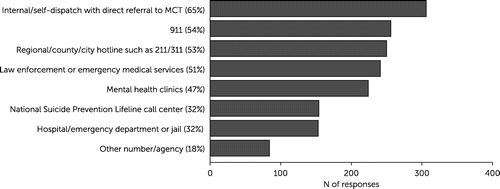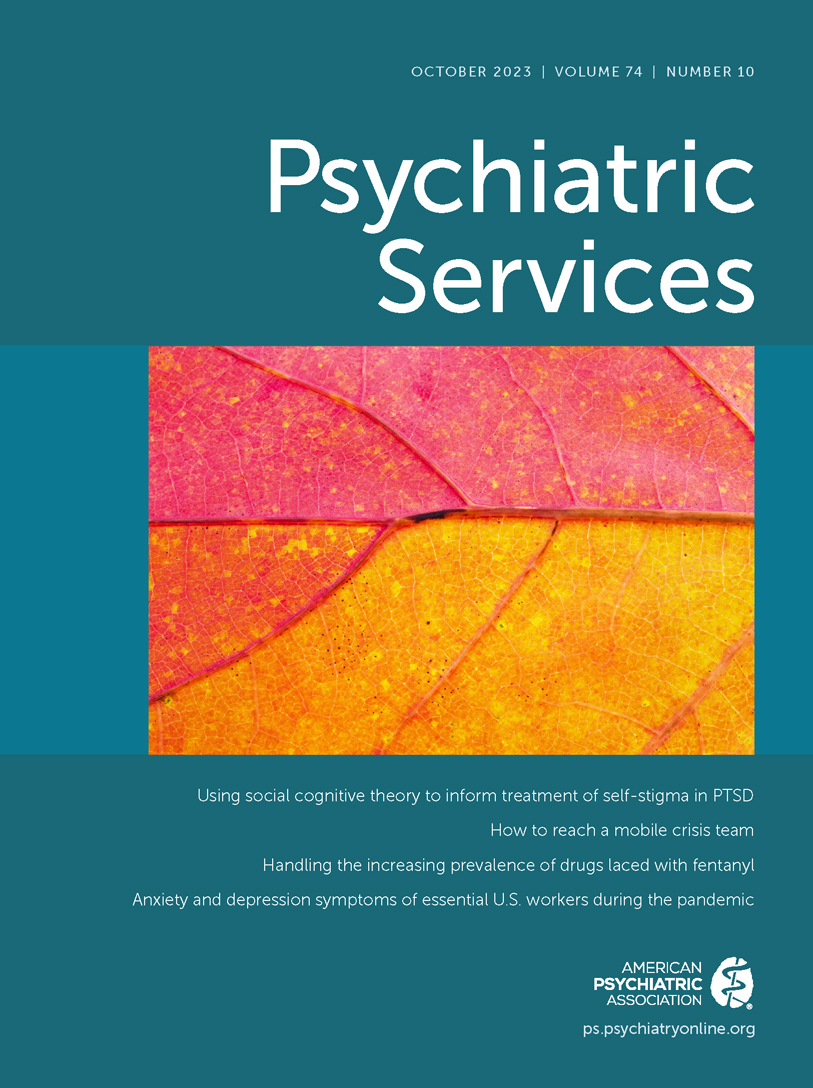How to Reach a Mobile Crisis Team: Results From a National Survey
The rollout of the 988 Suicide & Crisis Lifeline in July 2022 has raised urgent questions surrounding the infrastructure available to support callers during and after a call for help (1, 2). Currently, 988 callers are routed to their local National Suicide Prevention Lifeline (NSPL). From there, call-takers may provide counseling or initiate a referral. Should a caller urgently need in-person support, deployment of a mobile crisis team (MCT) would be a useful option (3). MCTs comprise behavioral health providers, medical staff, and sometimes law enforcement (in co-responder models) (4). MCTs are widely used, but a systematic description of their deployment and functioning is needed.
Data Source and Methods
During 2021–2022, we conducted a survey of U.S. MCTs, defining an MCT broadly to include co-responder models, clinician-led teams, and teams including medical personnel. We recruited a convenience sample of participants who led or worked in an MCT through national Listservs, social media, and personal invitation. We asked participants about their program’s key features and then calculated descriptive statistics. After analysis of missing and duplicate data, we included 554 responses. Respondents could skip questions and respond anonymously.
Results
Respondents were in 45 states, and most described their roles as either MCT program director (N=237 of 501, 47%) or MCT clinician (N=105 of 501, 21%). Figure 1 depicts responses to the question of how respondents’ MCTs can be deployed. Of the 474 respondents who answered the question, nearly one-third (32%, N=154) reported that their MCTs could be deployed by calling the NSPL. The most commonly reported channel for reaching an MCT was to call teams directly (N=306, 65%), and the second most common was calling 911 (N=256, 54%).

Figure 1. Phone number or agency that community members could call to deploy a mobile crisis team (MCT) in respondents’ programs (N=474)a
aRespondents could choose more than one option.
Implications
Although access to MCTs is an essential component of emergency mental health services, MCTs in many communities cannot be reached via 988. As federal and local agencies continue to implement 988-related changes, they should consider linking call centers to MCTs. The national 988 implementation sets the stage to establish a simplified point of access for mental health support and will hopefully streamline the process of connecting clients to services (5). As communities continue to integrate 988 calls into their service continuum, it should be recognized that current services are frequently fragmented and that it is important to communicate to community members how they can reach an MCT when needed.
1. : A look at the 988 soft launch. Psychiatric Times, July 12, 2022. www.psychiatrictimes.com/view/a-look-at-the-988-soft-launch. Accessed Feb 9, 2023 Google Scholar
2. : Preparedness for 988 Throughout the United States: The New Mental Health Emergency Hotline. Santa Monica, CA, RAND, 2022. www.rand.org/pubs/working_papers/WRA1955-1-v2.html. Accessed Feb 9, 2023 Google Scholar
3. National Guidelines for Behavioral Health Crisis Care—Best Practice Toolkit. Rockville, MD, Substance Abuse and Mental Health Services Administration, 2020. www.samhsa.gov/sites/default/files/national-guidelines-for-behavioral-health-crisis-care-02242020.pdf Google Scholar
4. : Crisis Response Services for People With Mental Illnesses or Intellectual and Developmental Disabilities: A Review of the Literature on Police-Based and Other First Response Models. New York, Vera Institute of Justice, 2019. www.vera.org/publications/crisis-response-services-for-people-with-mental-illnesses-or-intellectual-and-developmental-disabilities. Accessed Feb 9, 2023Google Scholar
5. : New opportunities to improve mental health crisis systems. Psychiatr Serv 2021; 72:169–173Link, Google Scholar



